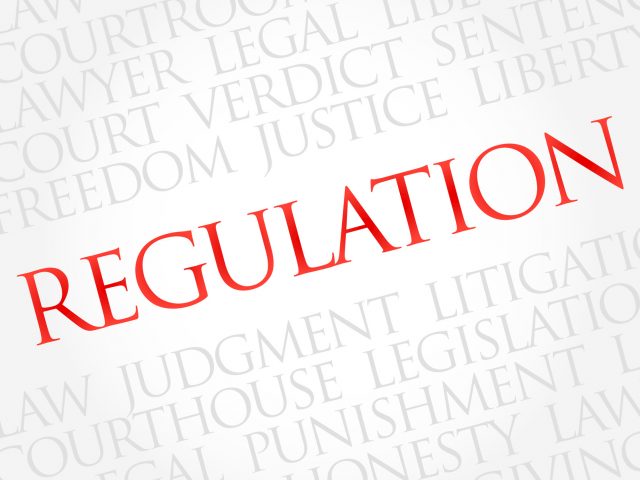On October 5, 2017, the Consumer Financial Protection Bureau (“CFPB”) released its final rule for short-term loans (“Final Rule”). While more time is necessary to fully digest the nearly 1,700 page rule, it appears to follow the proposed short-term lending rule (“Proposed Rule”),1 with several notable changes. Most notably, the CFPB did not finalize rules relating to underwriting requirements for long-term loans that do not have balloon payments.
KEY REQUIREMENTS UNDER THE FINAL RULE
Ability-to-Repay Loans
Under the Final Rule, it is an unfair and abusive practice for a lender to make short-term loans, or longer-term balloon-payment loans, without first making an ability-to-repay determination. As part of this ability-to-repay test, the lender must verify income, and estimate basic living expenses, to ensure that the borrower will be able to meet major financial obligations as well as basic living expenses for a specified time period based on the type of loan under consideration.
Additionally, lenders must comply with a 30-day cooling-off period before making a short-term loan, or longer-term balloon-payment loan, if the consumer has already taken out three short-term loans or longer-term balloon-payment loans that were outstanding within 30 days of each other.
Conditionally Exempt Loans
The Final Rule conditionally exempts from the ability-to-repay requirements short-term loans under $500 where no security interest is taken in the consumer’s vehicle and where other structural requirements specified in the Final Rule are satisfied. Lenders making conditionally exempt loans still need to review the consumer’s borrowing history, both in the lender’s own records and in a consumer report from a registered information system contemplated under the Final Rule.
Reporting Requirements
The Final Rule permits companies to become designated as “registered information systems” by the CFPB. Lenders making short-term loans and longer-term balloon-payment loans will need to furnish loan information to such a registered information system, and will also be required to obtain and review a consumer report from a registered information system, prior to making either a covered ability-to-repay loan or a conditionally exempt loan.
Payment Restrictions
The Final Rule also creates certain payment restrictions aimed at protecting consumers from suffering multiple insufficient funds fees or bank account closures. Specifically, the Final Rule requires that lenders provide written notice before debiting a consumer’s account to collect payment for a loan covered by the Final Rule. Additionally, a lender must cease debiting a consumer’s account after two consecutive unsuccessful attempts, including debits that are declined due to insufficient funds.
SCOPE
The underwriting portion of the Final Rule, including the ability-to-repay requirements, apply to short-term loans (i.e., loans with terms of 45 days or less) and longer-term balloon-payment loans (i.e., loans with terms longer than 45 days that have a balloon payment). Other portions of the Final Rule (including the payment restrictions) apply not only to short-term loans and longer-term balloon-payment loans, but also longer-term loans with an APR over 36% that includes authorization for the lender to access the borrower’s checking or prepaid account.
The Final Rule excludes from coverage (1) purchase money security interest loans, such as loans to purchase a car or personal property secured by the subject of the purchase; (2) credit secured by any real property; (3) credit card accounts; (4) student loans; (5) non-recourse pawn loans; (6) overdraft services and overdraft lines of credit; (7) wage advance programs; (8) no-cost advances; (9) alternative loans (i.e., loans similar to those made under the Payday Alternative Loan program administered by the National Credit Union Administration); and (10) accommodation loans.
SOME KEY CHANGES FROM THE PROPOSED RULE
Most significantly, the CFPB did not establish similar underwriting criteria applicable to longer-term loans that would have been covered under the Proposed Rule. The CFPB indicated that they are conducting further study of longer-term loans and may finalize rules for longer-term loans in the future. Thus, the Final Rule applies to short-term loans and longer-term loans with balloon payments.
Nevertheless, the scope of the rule has expanded in some respects; thus, many of the provisions that applied only to short-term loans under the Proposed Rule now also apply to longer-term balloon-payment loans. Additionally, under the Proposed Rule, a loan was only a longer-term balloon-payment loan if it had a total cost of credit in excess of 36% and either took a security interest in the consumer’s vehicle or obtained a means to directly access a consumer’s source of income. Under the Final Rule, this definition has become broader and all that is required for a loan to be a longer-term balloon-payment loan is that the loan has a duration longer than 45 days with a balloon payment.
In the Proposed Rule, the definition of “longer-term loans” would have established a new rate calculation figure, the “total cost of credit,” which would have included more charges than the ones that must be included in the annual percentage rate (“APR”). The Final Rule abandons that confusing calculation approach and, instead, utilizes the more familiar APR calculation as the means of defining the rate at which a loan becomes a “longer-term loan.”
The Final Rule also removes the presumptions of unaffordability and makes some modifications to the method by which an ability-to-repay calculation is performed.
EFFECTIVE DATE
The provisions of the Final Rule related to the registration of information systems will become effective 60 days after the Final Rule is published in the Federal Register, and the rest of the Final Rule will become effective 21 months after publication in the Federal Register.
FINAL CFPB RULE SPURS THE OCC TO ACTION
On the same day the CFPB released the Final Rule, the Office of the Comptroller of the Currency (“OCC”) reacted by rescinding the OCC’s supervisory guidance regarding deposit advance products (“Rescinded Guidance”), effective immediately. The Rescinded Guidance highlighted the similarities between deposit advance products and traditional payday loans and warned banks of the elevated credit, reputation, operational, and compliance risks associated with these loans.
In announcing the rescission, Acting Comptroller of the Currency Keith Noreika stated that the release of the CFPB’s Final Rule “necessitates revisiting the OCC guidance” in order to prevent national banks and federal savings associations from being subject to “potentially inconsistent regulatory direction.” The Acting Comptroller also noted that, in his opinion, since the release of the Rescinded Guidance, “it has become difficult for banks to serve consumers’ need for short-term, small-dollar credit,” and many consumers have therefore had to turn to less regulated entities. The Acting Comptroller even went so far as to state that the OCC’s earlier guidance on deposit advances “may even hurt the very consumers it is intended to help.”
1 See our client alert for a detailed review of the Proposed Rule.
This Article Was Co-Authored By:












